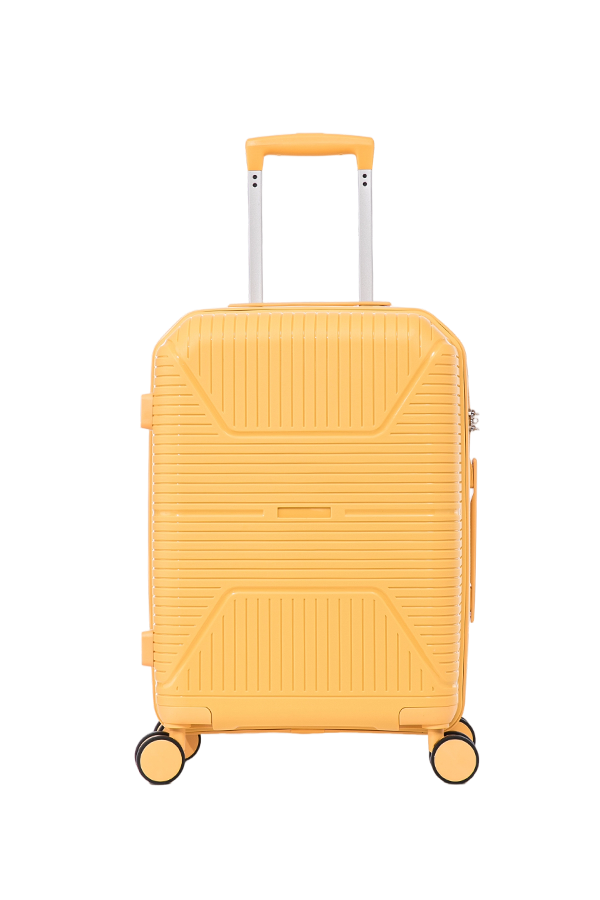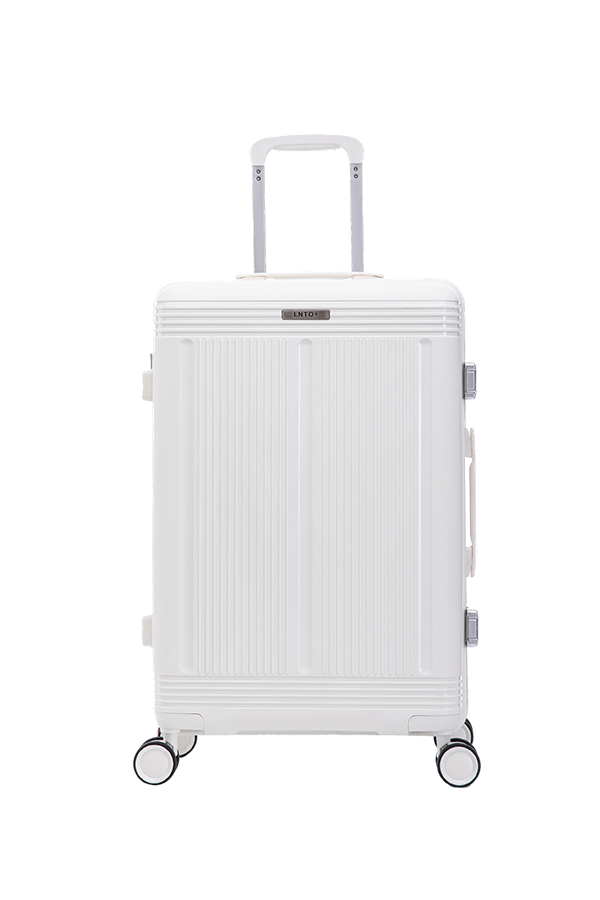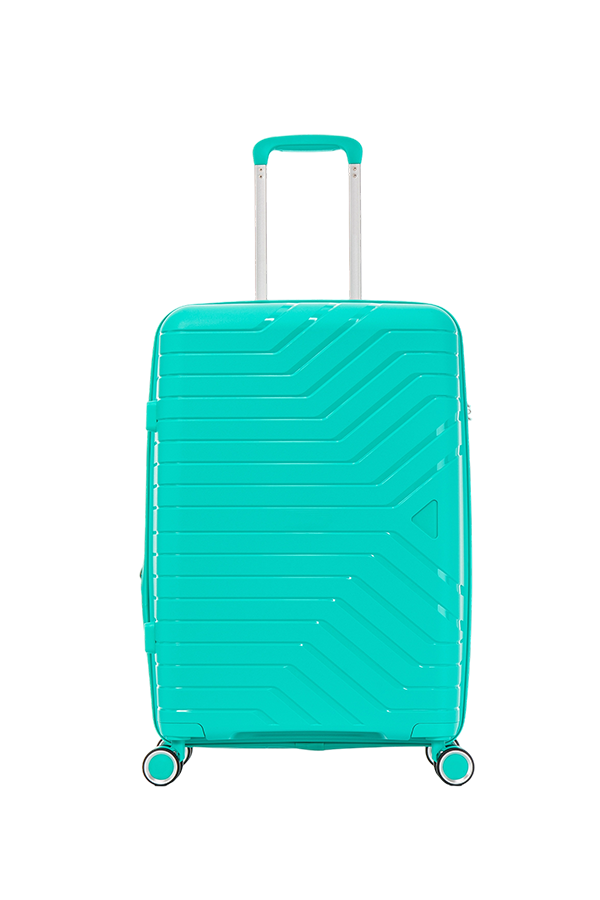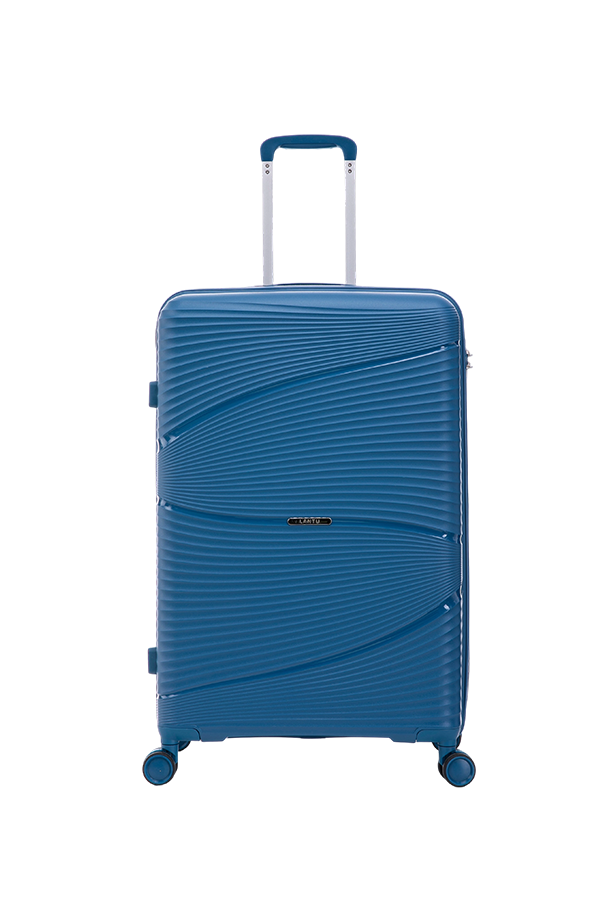What is the advantage of a four-wheel spinner design compared to two wheels?

The primary advantage of a four-wheel spinner design is its enhanced maneuverability. Unlike two-wheeled suitcases that must be tilted and pulled, spinner suitcases can roll upright in any direction with minimal effort. This allows the traveler to push, pull, or glide the suitcase sideways alongside them, which is particularly beneficial in crowded spaces like airport terminals. The upright position also reduces strain on the user's wrist and shoulder. Furthermore, the 360-degree rotation makes it easier to navigate tight corners and aisles. A potential consideration is that spinner wheels may protrude slightly, making them theoretically more susceptible to damage from rough handling, though modern designs are robust.
Are hardside carry-ons more fragile than softside ones?
This is a common misconception. While a softside suitcase may not show a puncture from a sharp impact in the same way, a hardside suitcase is not inherently more fragile. Hardside luggage, typically made from materials like polycarbonate or ABS, is designed to protect the contents from crushing and from the elements. Materials such as polycarbonate are engineered to absorb impact by flexing and then returning to their original shape, offering strong resistance to cracking. The rigid shell provides a consistent layer of protection against rough handling. Softside luggage, while often flexible and expandable, may offer less protection for fragile items inside unless they are carefully packed with padding.
How do I ensure my hardside spinner meets airline size regulations?
Airlines have specific dimensional requirements for carry-on luggage, which can vary between carriers. To ensure compliance, it is important to check the linear dimensions (length + width + height) specified by the airlines you use frequently. When purchasing a suitcase, manufacturers will list the product's external dimensions. It can be helpful to select a model that is advertised as being compliant with the standards of major airlines. It is also worth noting that some suitcases include expansion zippers; while useful for packing, using this feature may cause an otherwise compliant bag to exceed size limits, so it should be used with caution if planning to carry the bag on.
Rolling Suitcase with TSA Lock: How to choose?
Selecting a rolling suitcase with a TSA lock involves considering several factors beyond the lock itself to ensure the luggage meets your travel needs. The lock is a key security feature, but it is part of a larger system of durability, function, and design.
Evaluate the construction and durability. The material of the shell, whether a hardside polycarbonate or a durable softside fabric, will determine its resistance to impacts and abrasions. Pay close attention to the components that facilitate movement: the wheels and the telescopic handle. For wheels, look for a four-wheel spinner system for easy maneuverability and ensure they are made from a durable material, ideally with sealed bearings to keep out debris. The handle should extend and retract smoothly, with minimal wobble, and should feel sturdy when in use. The quality of the zippers is also important; large, robust zippers from known manufacturers tend to be more reliable over time.
Consider the internal layout and organization. A well-designed interior can significantly improve packing efficiency. Look for features like compression straps or panels to secure clothing and prevent shifting during transit. Multiple compartments, including zippered pockets for small items and wet bags for toiletries, help keep contents organized and easily accessible. The choice between a clamshell opening (which lays completely flat) versus a top-opening design depends on personal packing preference. The internal organization should align with how you prefer to pack and access your belongings.
The TSA lock should be integrated into the suitcase's design. A good TSA lock is built directly into the zippers or the shell's latch mechanism, rather than being an add-on that could be snapped off. Ensure the locking mechanism is easy for you to set and use. Alongside the lock, consider other practical features. The suitcase’s weight when empty is a factor, as a lighter bag allows for more packing capacity under airline weight limits. The handle’s comfort and the overall dimensions, ensuring it meets carry-on size requirements if needed, are also critical aspects in the decision-making process.
Hard Shell Luggage Sets: Different color options
The choice of color for a hard shell luggage set is a decision that blends personal taste with practical considerations. While aesthetics are a primary driver, the color can also influence the visibility of wear and the ease of identifying your luggage on a baggage carousel.
- Classic and Professional Neutrals: Colors like black, navy blue, charcoal gray, and deep brown are perennial favorites. They are often selected for their professional appearance and their ability to conceal minor scuffs and dirt accumulated during travel. A black suitcase, for instance, can maintain a clean look for a longer period. The main consideration with these dark, neutral tones is their commonality. Because they are so widely used, it can be difficult to quickly identify your specific bag among a sea of similar-looking ones, necessitating a distinct luggage tag or strap.
- Bright and Distinctive Hues: For travelers who prioritize easy identification, brighter colors such as royal blue, red, green, silver, and purple are options. A brightly colored suitcase stands out markedly on the baggage carousel, reducing the time spent searching and the chance of another passenger mistakenly taking it. These colors can also express personal style. A potential drawback is that lighter and brighter shades may show scratches and scuff marks more readily than darker neutrals, though textured or matte finishes can help mitigate this.
- Light Tones and Patterns: Colors like white, light blue, pink, and beige, as well as sets with integrated patterns or metallics, offer a distinctive and modern look. They are less common than standard black, making them relatively easy to spot. However, these options are the susceptible to showing stains, dirt, and scuff marks. They may require more frequent cleaning to maintain their appearance. For travelers who check their luggage, the potential for cosmetic wear might be a factor, though this does not affect the structural integrity of the luggage.
- Textured and Specialty Finishes: Beyond solid colors, many manufacturers offer finishes that affect both appearance and function. Matte finishes are effective at hiding scratches because they lack a glossy surface that would highlight surface imperfections. Textured patterns, such as a geometric design, can also help to camouflage minor wear and tear. Metallic finishes, like brushed aluminum or gold, provide a distinctive look but may be prone to showing fingerprints. The choice here often comes down to a balance between the desired aesthetic and the level of maintenance one is willing to undertake.


 English
English Deutsch
Deutsch








